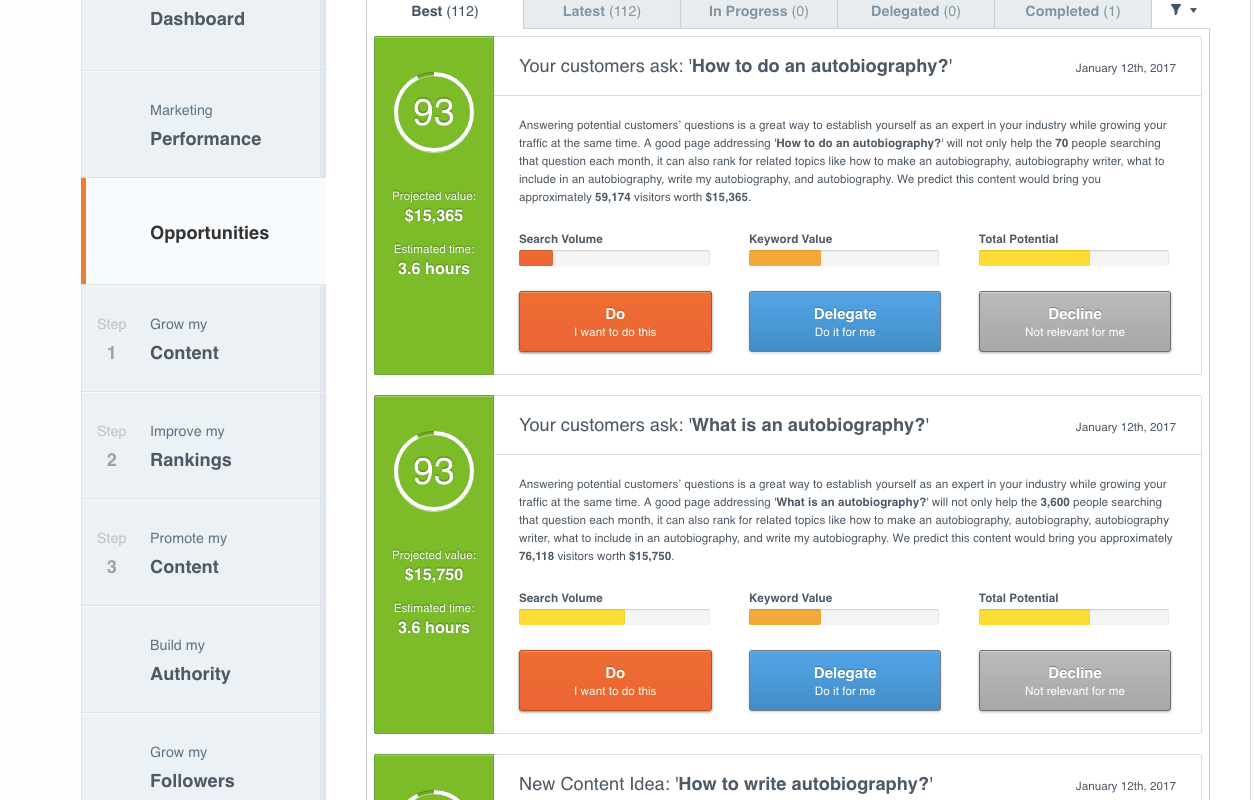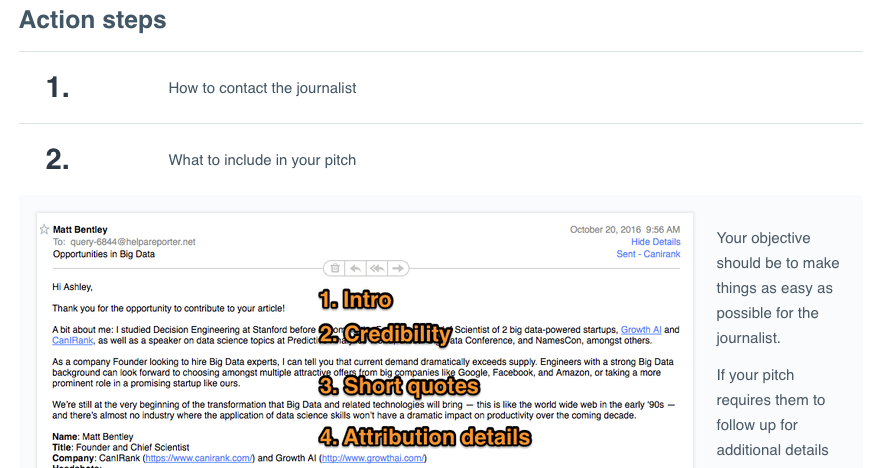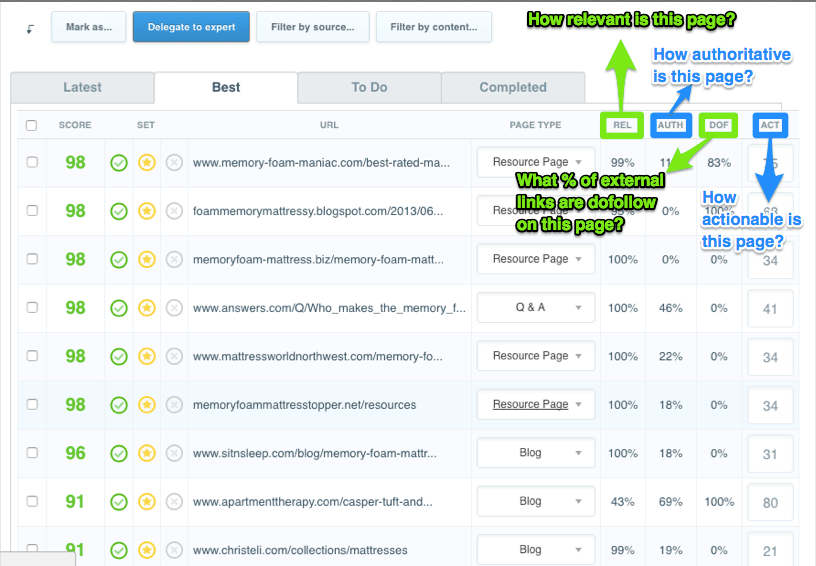Working with up-and-coming eCommerce businesses is a passion, a pleasure, and somewhat of a tricky challenge when it comes to link building.
I first encountered this unique challenge when working for Bavarian Clockworks, a small (but mighty) seller of high-end clocks. My team and I had inherited an impeccable website – user-friendly with strong writing, design, and beautiful products. We’d assembled an engaging blog, and now it was time to begin our outreach efforts – to connect ourselves via links to other industry and related sites.
While our optimization efforts had us sitting pretty on results pages two and three, we needed an authority boost to get us to page one. We needed more incoming links.
But as many business owners and SEOs will tell you, backlinks are hard to come by for eCommerce sites. It has to do with the natural distrust that comes from linking to products, and the fact that many people, unless compensated, just don’t want to do it.
Big brands with big budgets have ways of overcoming this challenge. They might have established relationships with industry influencers, money for attention-grabbing content productions, celebrity endorsers, friends in high places (or at least in places with high domain authorities), and the list goes on.
But what about smaller brands, newer businesses that don’t have the funds to put towards link building? Are cash and clout really the only means to building a stellar backlink profile?
I’m happy to say that the answer to this question is no. I experienced it for myself with Bavarian Clockworks and have since confirmed it many times working for an agency that consistently succeeds in link building for eCommerce businesses big and small.
TIME + CREATIVITY + STRATEGY = LINK BUILDING SUCCESS
In my time working for CanIRank Full Service (the agency side of CanIRank) I’ve been witness to, and have utilized myself, an array of link building strategies – some more exciting than others, but all effective in dramatically increasing the backlink volume to clients’ sites.
Sometimes we’ll craft informational content that draws in a trickling of links over months and even years. Other times, we’ll go for the big bang, a timely journalistic article, for instance, that attracts a significant amount of backlinks all at once. Of course, these are the far ends of the spectrum, and there are many other strategies along the way that we utilize as well.
I find this whole process of link building, from ideation to execution, really (perhaps disproportionately) fun. And interesting. But what I find most interesting of all is the role that budget plays in the process.
While no one can deny that big allowances make link building easier and more scalable, working with a tight budget, or no budget at all, does not take you out of the game by any means. It does require some elbow grease, but with a little time, creativity and strategy, small eCommerce businesses can achieve link building success.
To get you started, I’ve listed below seven cost-free link building ideas for eCommerce sites that have proven effective over time.
1. Be a Resource
Take a look at what questions your potential customers are asking and answer them with top-notch evergreen content.
The key to this strategy is in the execution. It’s not likely you’ll be the first website to address your customer’s needs, so you’ll want to find a way to answer their questions either differently or superiorly.
For example, if you can produce a video on how to package a chandelier, where there currently only exists a text tutorial, more chandelier companies, antique dealers, and appraisers will be encouraged to link to your content.
If you can’t find a way to do it differently, then you must do it better. Be more concise, more engaging, more detailed – more something than what’s already out there.
This resource strategy is one that results in a gradual, long-term trickling of backlinks, so don’t be alarmed if you don’t win a hundred links right away. Just sit back and rest assured that, with a little outreach, you’ve secured yourself a steady flow of backlinks over time.
Not sure which questions your customers are asking?
Some research might be in order. Here are some useful processes:
- Use Google’s Keyword Planner, then filter in excel to get only those key terms that contain question words (who/what/how/etc.).
- Scan Quora and forums in your niche to see which questions pop up frequently and have a large number of views.
- Have a look at Google’s related search suggestions (or use UberSuggest to scrap them), and again filter the list down by question words.
Alternatively, you can use CanIRank’s opportunities feed, which collects data from all of these sources for you, then scores each question according to the number of people asking that question, the relevancy to your website, and the predicted ROI of that content.

2. Collaborate with Influencers
Often influencers are happy to provide quotes or photographs to a piece of quality content in exchange for a link or mention of their social media accounts.
Influencers hold many keys to the doors we, as marketers and SEOs, would like to open. But for small eCommerce businesses with no allotted funds, traditional influencer marketing is not usually a realistic option. There are, however, ways to involve influencers in your content that don’t require them pitching your product to their followers.
The idea is to put the spotlight on the influencer(s) – i.e., don’t mention your brand or products in the content piece. And give them a good reason to partake in your project, remembering that influencers work very hard to build their audiences and will need an incentive to share your content with them.
I’ve personally found this link building idea works best in fields where influencers are particularly passionate, such as wellness and eco-friendliness. Sometimes just being a part of a content piece that supports his or her core values is enough incentive for an influencer to take part and promote to their followers (and potentially provide a link to the piece from their site).
So, if your brand or content project supports a noble cause or plays well to the passions of influencers, this could be a great link building strategy for you to employ.
Another tip is to reach out to influencers who are still building their followings. That way, the exposure they receive from being included in your project is valuable to them. A win-win!
Stefan Debois, the CEO of Survey Anyplace, also recommends looking into influencers’ previous content before reaching out to them. That way, you can make sure they can link to your content in a natural way.
I think this is a particularly fun strategy that allows for lots of creative thinking. The more inspired the idea, the more likely it’ll be that influencers will want to collaborate with you. Challenge accepted?
3. Guest Post
Seek out opportunities to contribute to other sites in exchange for a link.
Guest posting can be time-consuming, but it benefits your business in multiple ways. For one, it expands your reach, increasing brand awareness and affinity. Additionally, and most importantly for us here, it gives you the opportunity to link back to your site.
Because not all guest posting opportunities come with the chance to link build, and because not all backlinks are to be considered equal, here are some things to look for when searching out guest posting opportunities:
- Domain Authority: the higher the domain authority of the site on which you’re posting, the more valuable the backlink will be.
- Relevancy: posting on sites that are related to your industry will not only put you in touch with potential customers, but will also result in a more relevant, and therefore more valuable, backlink.
- No-Follow Links: some sites might place no follow tags on their links, which means your link(s) will not be recognized by search engines. Guest posting on a site that no follows links might still be worth pursuing, as that link can drive some traffic, but as far as link building goes, there’s no value there.
The CIR Link Building Tool makes this an easy process, scoring each potential link source for all of the three qualities listed above: authority, relevancy, and whether or not links are nofollow.
4. Data-Driven Content
Publishing data, especially original data, is a powerful way to build links to your site.
This is a personal favorite strategy of mine because it’s so effective. Turns out, the internet loves numbers!
Writers are frequently looking for hard facts to add legitimacy to their work and will link to your study if you can provide them with objective evidence to back their claims. Not only that, but content writers and journalists alike will often build a story around your data.
For example, let’s say we’ve just facilitated a survey of 2,000 millennial-aged workers that shows 70% of them would be willing to take a 20% pay cut in order to work remotely. We could then pitch our findings to journalists and business writers, who might want to create an article around our numbers, spurring headlines such as:
Millenials Choose Flexible Schedules Over Higher Incomes
or: Here’s How to Attract Top Millennial Talent to Your Company
There’s a good chance many of these stories will cite your study with a link. Et Voila, high-quality backlinks coming your way.
Here’s a real-life example:
In the late months of 2016, when the general election was hot on everyone’s minds and you couldn’t go anywhere without encountering a provocative Trump/Clinton headline, the team at CanIRank was wondering something: was Google biased? Was there perhaps a tendency for liberal-leaning sites (or conservative sites, for that matter) to appear in top search results?
Our team knew that any revelations provided by data would make for an excellent headline, so we went to work on an extensive analysis, while pitching top journalists our idea. Ultimately, our study landed in the Wall Street Journal (published after election day to avoid potentially influencing the outcome).
While the WSJ didn’t link to our site, they did mention CanIRank.com, which led to many backlinks from other high quality sites.
5. HARO
HelpAReporter.com is an excellent outlet for link building.
Here we have a website that connects reporters and sources (you) in a mutually beneficial exchange that can result in both exposure for your brand and a quality backlink.
HARO is not quite the trade secret it used to be, so here are some tips to help your pitches beat out the competition:
- Pitch widely both within and outside your industry.
- Respond quickly.
- Be succinct and answer the question(s) they are asking head on.
- Use a clickable, attention-grabbing headline.
- Provide all the information requested so the journalist can cite you without any further contact.
If you’re looking for the right words to send to prospective journalists, the CIR Link Building Tool offers free outreach email templates to get you started.

The CIR software is also a good tool to help you narrow down and/or prioritize HARO inquiries. The Opportunities Feed frequently presents new press opportunities relevant to you and your business, showing you the historical acceptance rate of that particular journalist and that outlet as well as the authority of that outlet, so you can focus on the opportunities that offer the most authority with the highest chances of success. They also show you CanIRank consultants who have successfully pitched that journalist in the past, so you can delegate with one click.
6. Product Reviews
Sending samples of your products out for review is a strategy that pays in multiple ways.
This one isn’t for everyone. If you sell diamonds or furniture, it might be a bit tricky or expensive to give samples away for review (though not impossible!). But if you sell candles, for instance, gifting them to bloggers in exchange for a review is a great way to build links.
It’s a strategy with many potential benefits, including a link from your reviewer, a positive review you can use as content on your site, social media coverage that often comes from working with bloggers and brand exposure that reaches an audience who might otherwise be out of reach.
7. Define an Amplification Process
Getting your quality content in front of many people increases the likelihood one of them will link to your site.
Defining an amplification process is all about creating a repeatable process for getting your content in front of as many eyes as possible. Once you have your system in place, this strategy can be relatively painless and can result in huge traffic boosts, as well as backlinks.
It’s true that amplification won’t necessarily win you backlinks directly, but it will put your content on the radar of what we sometimes call the “linkerati,” drastically increasing the chances that sites will naturally link to you.
Whether it be through individualized outreach or mass distribution such as social sharing, amplification is essential to a link building campaign and an important finishing process for many of the strategies on this list.
Here at CanIRank, we run each blog article through our content amplification process upon publication. Our first rule is to write genuinely helpful content. That’s the biggest thing. But then, in order for our posts to actually help our readers, build links and do all the other things good content should do, we have to make it readily available and easy to find. So we post in forums, share on social media, contact roundup editors and reach out to any contacts and/or industry writers who we think might be interested in sharing our stuff.
This practice of amplifying each piece of content has not only earned us backlinks and traffic but has also introduced our software and services to future customers.
Conclusion
To bring things full circle, I’ll mention here that after a year of tight budget link building, using the strategies above, Bavarian Clockworks became a major player in their niche industry. For their primary keyword, “cuckoo clocks,” they went from being positioned somewhere on Google results pages 7 and 8 to occupying the number 2 position on page 1, beating out their top competitors.
It’s not always easy. In fact, from experience I know that link building is often the biggest challenge of eCommerce SEO. But it also opens doors to creative opportunities, collaborations, community building and many other healthy business practices. It’s an area well worth investing much of your resources, whether that be a portion of your budget or simply your time and creativity.
If you’re looking for a way to streamline the above link building ideas for eCommerce sites, outsource much of the work and better pinpoint achievable opportunities, all while sticking to your budget, the CanIRank Link Building Tool just might be your new best friend. It really is the best White Hat link building tool out there!
Check it out here.









I am a beginner to e-commerce and your article help for my seo.
thanks for sharing
Great article!
Fantastic content, thank you!
Great content, thanks for sharing!
Thank for this info. I learned a lot, it’s really helpful!
Thank’s for your info. It’s really helpful
Thank you for the great content! I love your blog!
Can you define more about amplification link building process ? Or any guide related to this topic.